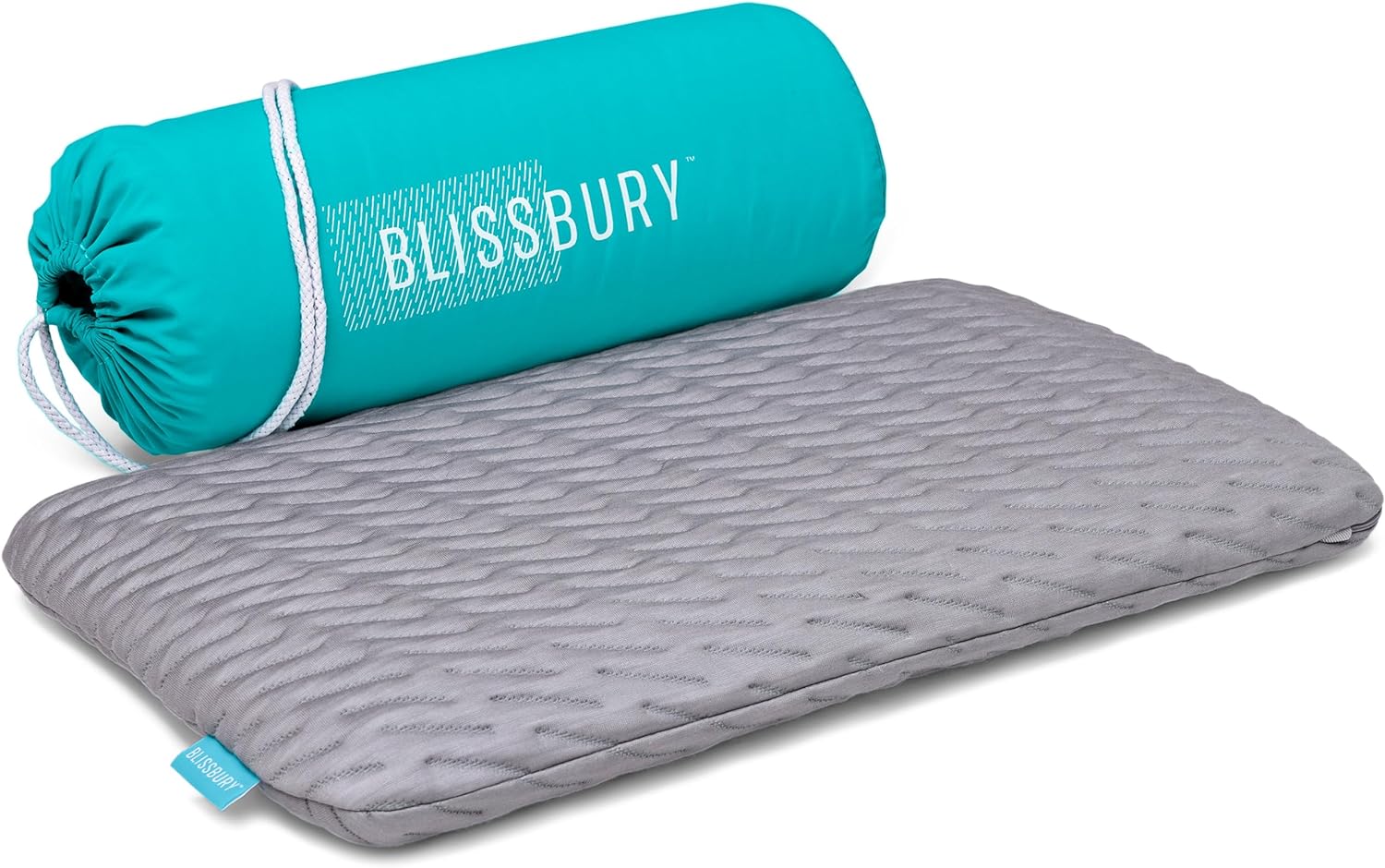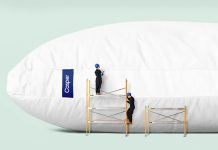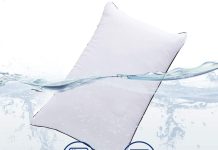Pampering yourself with a comfortable and soft pillow is a luxury we all enjoy. But have you ever wondered when it’s time to bid farewell to your beloved lofty down and feather pillows? As the years go by, these pillows may lose their fluffiness and support, leaving you with a less than satisfactory sleeping experience. In this article, we will decipher the telltale signs that indicate it’s time to part ways with your pillow and invest in a new one, ensuring you wake up well-rested and rejuvenated each morning.
Review contents
Signs You Need to Replace Your Lofty Down and Feather Pillows
Losing Loft and Shape
One of the clear signs that it’s time to replace your lofty down and feather pillows is when they start losing their loft and shape. Over time, the fill materials in the pillows, such as down and feathers, can become compressed and flattened, resulting in a pillow that no longer provides the necessary support and comfort for a good night’s sleep. You may notice that the pillow feels lumpy or uneven, and it fails to regain its original shape even after fluffing. If this is the case, it’s definitely time to say goodbye to your old pillow and invest in a new one.
Allergies and Respiratory Issues
If you find yourself constantly sneezing, coughing, or experiencing respiratory issues during the night or upon waking up, your old down and feather pillows might be to blame. Over time, allergens such as dust mites, pollen, and pet dander can accumulate in the pillow, triggering allergies and exacerbating respiratory conditions. Even if you diligently clean your pillows, the accumulation of these allergens can still occur, making it necessary to replace your pillows to ensure a healthier sleep environment.
Lumpiness and Uneven Distribution
Another telltale sign that it’s time to replace your lofty down and feather pillows is when they become lumpy and have uneven distribution of fill materials. As you sleep, the fill materials can shift and clump, leading to an uncomfortable sleeping experience. This can result in pressure points on your neck and back, causing pain and discomfort. If you find yourself constantly adjusting and fluffing your pillow to no avail, it’s a clear indication that you need to replace it with a new one that offers better support and even distribution of the fill materials.
Visible Stains and Odors
Nobody wants to sleep on a pillow that’s stained or emits unpleasant odors. If your down and feather pillows have visible stains that are hard to remove or if they have an unpleasant smell that doesn’t go away even after washing, it’s time to bid farewell to them. Stains and odors can indicate that your pillows have accumulated dirt, sweat, or oils over time, rendering them unhygienic and potentially compromising your sleep quality. It’s best to replace them with fresh, clean pillows that provide a healthier sleeping environment.
How Old is Your Pillow?
General Lifespan
The general lifespan of a lofty down and feather pillow can vary depending on several factors. On average, these pillows can last anywhere from 2 to 5 years. However, this estimate can be influenced by factors such as the quality of the pillow, the frequency of use, and the maintenance and care it receives. Higher-quality pillows that are well-maintained and used less frequently may last closer to the 5-year mark, while lower-quality pillows that are used daily may need replacing after just a couple of years.
Frequency of Use
The frequency with which you use your lofty down and feather pillows can greatly impact their lifespan. If you use your pillows every night, the constant compressing, shifting, and absorption of body oils and sweat can lead to faster deterioration of the fill materials. On the other hand, if you only use the pillows occasionally, they may last longer. It’s important to assess your pillow usage and consider replacing them accordingly if you notice any signs of wear and tear.
Maintenance and Care
Protective Pillow Covers
One of the most effective ways to prolong the lifespan of your down and feather pillows is to use protective pillow covers. These covers act as a barrier, preventing the accumulation of dust, dirt, and allergens that can break down the fill materials over time. Additionally, they offer an extra layer of protection against stains and spills. It’s recommended to choose pillow covers that are made of breathable materials and are easily removable for regular washing.
Fluffing and Shaking
Regularly fluffing and shaking your lofty down and feather pillows can help maintain their loft and ensure even distribution of the fill materials. Fluffing involves manually repositioning the down and feathers inside the pillow to help them regain their original shape and resilience. Shaking the pillows helps to redistribute the fill materials and remove any clumps or bunching. Performing these simple maintenance tasks on a regular basis can prevent the pillows from losing their loft and shape prematurely.
Washing and Drying
Proper washing and drying techniques are essential for maintaining the cleanliness and integrity of your down and feather pillows. It’s important to refer to the care instructions provided by the manufacturer, as they may vary depending on the specific fill materials and pillow construction. In most cases, down and feather pillows can be safely laundered in a large-capacity washing machine using a gentle cycle and mild detergent. Proper drying is equally important, as insufficient drying can lead to clumping and mildew. Tumble drying on low heat or air drying is generally recommended.
Quality of Fill Materials
Degradation of Down and Feathers
Over time, the down and feathers inside your lofty pillows can degrade and lose their original quality. The natural oils and body moisture absorbed by the fill materials can cause them to become brittle and less resilient, resulting in a pillow that no longer provides the desired comfort and support. If you notice that your pillows have become flat and lack the fluffiness they once had, it’s a good indication that the down and feathers have degraded and it’s time to invest in new pillows with higher-quality fill materials.
Migration and Clumping
Migration and clumping of the down and feathers inside your pillows can also be a sign that they need to be replaced. Migration refers to the movement of the fill materials to one side or corner of the pillow, leaving the other areas devoid of sufficient support. Clumping occurs when the down and feathers clump together, resulting in uneven distribution and discomfort. These issues can be exacerbated with age and use, making it necessary to replace your pillows to ensure consistent support and comfort.
Changes in Sleep Preferences
Switching Sleeping Positions
If you find yourself switching sleeping positions frequently or have transitioned to a different position altogether, your old lofty down and feather pillows may no longer be suitable for your new sleep preferences. Different sleep positions require different levels of support and loft. For example, back sleepers may prefer a flatter pillow, while side sleepers may require a higher loft to maintain proper spinal alignment. If your current pillows no longer align with your preferred sleep position, it’s time to consider replacing them with pillows that cater to your changed needs.
Desire for Firmer or Softer Pillows
Another reason to replace your old down and feather pillows is if your comfort preferences have changed. As time goes by, you may find that you have developed a preference for either firmer or softer pillows. Perhaps you have experienced discomfort or pain due to inadequate support or excessive sinking. Whatever the case may be, it’s important to listen to your body and invest in new pillows that meet your current comfort needs. Remember, a good pillow can make all the difference in achieving a restful night’s sleep.
Physical Wear and Tear
Signs of Wear and Tear
Like any other household item, lofty down and feather pillows are subject to physical wear and tear over time. Signs of wear and tear can include frayed seams, thinning fabric, and overall diminished structural integrity. If you notice that your pillows have visible signs of damage or weakness, it’s a clear indication that they need to be replaced. Continuing to use pillows that are in a deteriorating condition not only compromises your comfort and support but also increases the risk of feathers leaking out and causing discomfort or allergies.
Sewn Seams and Fabric Integrity
The sewn seams and fabric integrity of your down and feather pillows are crucial for maintaining their shape and preventing fill materials from escaping. Over time, the constant pressure and movement can cause the seams to weaken, resulting in potential leaks. Similarly, the fabric itself can become worn, thin, or even develop small tears. Regularly inspecting the seams and fabric of your pillows can help you identify any issues early on and take the necessary steps to replace them before further damage occurs.
Loose Feathers and Leaks
If you notice loose feathers or experience feathers poking through the fabric of your pillows, it’s a clear indication that they need to be replaced. Feather leaks can occur due to deteriorating fabric, weakened seams, or significant degradation of the fill materials. Loose feathers not only compromise the comfort and support provided by the pillows but can also trigger allergies or sensitivities. It’s important to address this issue promptly by investing in new pillows that are free from leaks and provide a higher level of comfort and support.
Signs of Allergies or Sensitivities
Increased Sneezing and Congestion
If you notice an increase in sneezing, congestion, or other allergy symptoms during or after using your down and feather pillows, it could be a sign of an allergic reaction. Over time, the fill materials in the pillows can accumulate allergens such as dust mites, pollen, and pet dander, which can trigger allergic reactions in sensitive individuals. If your symptoms persist despite regular cleaning and maintenance, it’s advisable to replace your pillows with hypoallergenic options that offer a barrier against common allergens.
Skin Irritation or Rashes
In some cases, the down and feathers in your pillows can cause skin irritation or rashes, particularly if you have sensitivities or allergies to these materials. Feather quills or small fragments can poke through the fabric and come into direct contact with your skin, leading to redness, itching, or even more severe reactions. If you experience such symptoms, it’s best to switch to pillows made from alternative materials that are hypoallergenic and less likely to cause skin irritations.
Changes in Comfort and Support
Flattening and Lack of Resilience
One of the main reasons to replace your down and feather pillows is when they start to flatten and lose their resilience. As the fill materials degrade over time, the pillows may become increasingly compressed and fail to regain their original loft and shape, resulting in inadequate support. This can lead to discomfort, pain, and restless nights. If you find yourself constantly fluffing and adjusting your pillow to no avail, it’s a clear sign that it’s time for an upgrade to pillows that provide better comfort and support.
Neck and Back Discomfort
If you regularly wake up with neck or back discomfort, your down and feather pillows may be contributing to the problem. Over time, your pillows may no longer provide the necessary support and alignment for your neck and spine, leading to strain and pain. If you’ve ruled out other potential causes, such as your mattress or sleeping position, it’s worth considering whether your pillows are to blame. Upgrading to pillows with a different loft or firmness level may help alleviate your discomfort and improve your sleep quality.
Considerations for Hygiene and Cleanliness
Buildup of Dead Skin Cells and Dust Mites
As you sleep, your down and feather pillows can accumulate dead skin cells, sweat, and body oils. These substances provide a food source for dust mites, microscopic insects that thrive in warm, humid environments. Dust mites can trigger allergies and respiratory issues, particularly in individuals with sensitivities. Regular washing can help reduce their buildup, but over time, it may become difficult to completely eliminate them. If you’re concerned about the hygiene and cleanliness of your pillows, replacing them with fresh ones can offer a clean start and a more sanitary sleep environment.
Unpleasant Smells or Discoloration
Unpleasant smells or discoloration can be a sign of accumulated dirt, sweat, or oils in your down and feather pillows. Despite regular washing, these substances can seep into the fill materials and fabric, causing lingering odors and discoloration that are difficult to remove. If your pillows consistently emit unpleasant smells or show visible stains or discoloration, it’s time to consider investing in new pillows that are free from odors and provide a fresh, clean surface for a comfortable sleep.
When It’s Time for an Upgrade
Investing in New Pillows
When the signs mentioned above become apparent in your down and feather pillows, it’s an indication that it’s time for an upgrade. Investing in new pillows can greatly improve your sleep quality and overall comfort. Look for pillows that are specifically designed to address your needs, whether it’s providing adequate support, catering to different sleep positions, or addressing allergies and sensitivities. With a wide range of options available, you can find pillows that fit your preferences and ensure a rejuvenating night’s sleep.
Choosing the Right Fill Type
When choosing new pillows to replace your old down and feather ones, it’s important to consider the fill type that best suits your needs. While down and feathers offer luxurious softness and warmth, alternative fill materials such as memory foam, latex, or synthetic fibers can provide different levels of support and hypoallergenic properties. Consider your comfort preferences, sleep position, and any allergies or sensitivities when selecting the right fill type. Testing different pillows before making a final decision can ensure you find the perfect fit for a comfortable and restful sleep experience.
In conclusion, it’s crucial to recognize the signs when your lofty down and feather pillows need to be replaced. Losing loft and shape, experiencing allergies or respiratory issues, dealing with lumpiness or uneven distribution, and dealing with visible stains and odors are clear indications that it’s time to invest in new pillows. Factors such as the age of your pillows, frequency of use, changes in sleep preferences, physical wear and tear, signs of allergies or sensitivities, changes in comfort and support, and considerations for hygiene and cleanliness should also be taken into account. By considering these factors and following proper maintenance and care practices, you can ensure a comfortable and healthy sleep environment. When it’s time for an upgrade, investing in new pillows and choosing the right fill type will contribute to a better night’s sleep and overall well-being.



























